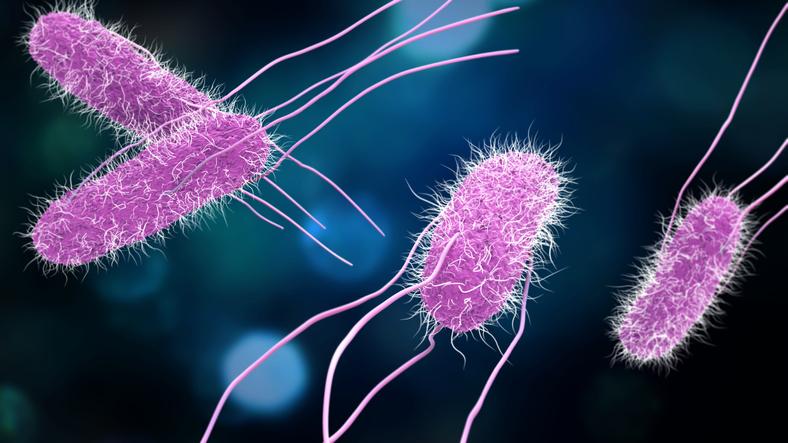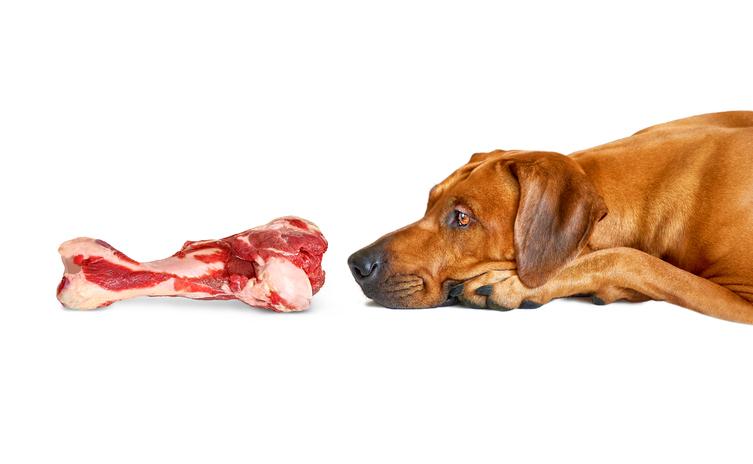BARF – Discussing the risks of raw feeding with clients
Raw feeding - also known as BARF diet or RMBD - is a diet consisting primarily of raw meat, bones, and organs. Proponents of raw food diets for dogs claim that they are more natural and healthier than commercial diets. There are however, several potential risks associated with feeding dogs a home-made raw food diet.
3 common raw feeding risks
Its important to say that most of the concerns around raw feeding relate to the homemade raw diets. The manufacturers of commercial raw food diets are subject to the same rules as any petfood manufacturer that ensure they provide safe and balanced nutrition
Risk 1 - Nutritional Imbalance
Home-made raw food diets are often based on a limited selection of ingredients, and without proper supplementation, they may not provide all al the nutrients. In one study, 95 samples of home-made raw food rations were analysed; 60% of the rations were found to have significant dietary imbalances and the remaining 40% were reported to have minor imbalances or were found to be balanced.1
In another study2, nutrient calculation of 83 raw meat-based diets showed that 94% had at least 1 nutrient imbalance and 66% had more than 5 nutrient imbalances. Major observed imbalances were imbalances in dietary calcium and phosphorus levels (both too low and too high levels) and too low levels of vitamins D, vitamin A, iodine, copper and zinc. Nutrient deficiencies or excesses could cause health problems when fed longer-term to adult dogs. In young, growing dogs health problems will appear much faster, like developmental orthopaedic conditions when fed diets with imbalanced calcium and phosphorus levels.

It’s true you don’t have a nutritionist standing over your shoulder when you cook at home, but there is an important difference. Humans eat different things most nights – so if Tuesdays menu is deficient in something, it’s likely that Wednesday’s menu will make up for that. Dogs often eat the same thing most days, so every meal needs to be balanced – and to do that takes training and expertise.
If your client is considering a home-made raw diet, it is reasonable to ask them how they would plan on providing a full balanced diet above just giving raw meat and bones and if they aren’t able to do this then suggest they use commercially prepared raw food where the manufacturer is able to ensure properly balanced diet.
1 Dillitzer, N, Becker, N, Kienzle, E. (2011) Intake of minerals, trace elements and vitamins in bone and raw food rations in adult dogs. Br J Nutr 106: S53-S56. Frequency and extent of nutritional imbalances in “bone and raw food” (barf) rations.
2 Hajek V, Zablotski Y and Kölle P (2021) Computer-aided ration calculation (Diet Check Munich©) versus blood profile in raw fed privately owned dogs. J Anim Physiol Anim Nutr 00:1-10. https://doi.org/10.1111/jpn.13601
Risk 2 - Bacterial contamination
Raw meat, bones, and organs can contain harmful bacteria such as Salmonella and E. coli. A dog’s digestive system is incredibly robust so they can normally handle this bacterium with little or no harmful effect. Although bacterial contamination can be a risk for diseased dogs with a poor immune status
The problem is bacteria shedding – the expulsion of disease-causing microorganisms into the environment, the main routes being routes the respiratory tract, genital tract, and intestinal tract.
These bacteria around the house could be harmful for anyone but a particular worry for any immunocompromised people living in the house. Children are also at greater risk; their immune systems are still developing, and they are more likely to put fingers – or anything else into their mouths.

Again, the risk is greater from homemade raw diets. As with all commercially prepared pet foods, commercially prepared raw foods are subject to legislation that requires proper testing to ensure they are safe, minimising the risk of food-borne contamination.
It is true that chicken for human consumption can also contain salmonella, and we don’t stop eating chicken. The difference is we cook the chicken. The raw, unpackaged chicken is only briefly exposed and then on kitchen work surfaces, that we tend to keep clean. We also eat the chicken cooked, so we aren’t then spreading the bacteria around the house.
To safely handle raw diets the owners, need to clean and disinfect all surfaces and utensils that the food has touched, both feeding and preparation areas; avoid contact with the dog’s face and wash their hands after petting their dog. If they take those precautions then fine, but how many will actually do that – particularly the hand washing after every contact with the dog.
Risk 3 - Choking hazards
Feeding of bones to dogs can bring potential risks of choking hazard, bones getting stuck in the oral cavity or of fractured teeth. Bones can splinter and cause damage to the digestive tract or gastrointestinal perforations. Splintering and breaking of bone is especially a hazard when bones are cooked, but can also occur when some types of raw bones are fed. Intestinal obstructions are others types of injuries associated with feeding bones.

